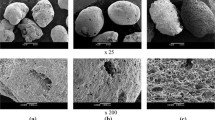Abstract
High Strength Concretes (HSC) with extremely low water to binder (w/b) ratios are characterized by high cracking sensitivity which is a consequence of increased autogenous shrinkage. The major reason for autogenous shrinkage—self-desiccation—cannot be eliminated by traditional curing methods. The application of the concept of internal curing by means of saturated lightweight aggregate was applied and shown to be effective in eliminating autogenous shrinkage. The present paper describes an approach to optimize the size and porosity of the light-weight aggregate to obtain effective internal curing with a minimum content of such aggregate.
Résumé
Les bétons de haute résistance qui ont un rapport eau/liant extrêmement bas, sont caractérisés par une haute sensibilité à la fissuration, qui est l'une des conséquences d'un retrait endogène plus important. La raison principale du retrait endogène—l'auto-dessiccation—ne peut être éliminée par les méthodes conventionnelles de cure. L'application du concept de la cure interne au moyen de granulats légers saturés a été pratiquée et s'est avérée effective pour éliminer le retrait endogène. Cet article décrit une approche visant à améliorer la taille et la porosité du granulat léger afin d'obtenir une cure interne effective avec un volume minimum d'un tel granulat.
Similar content being viewed by others
References
Vaysburd, A. M., ‘Durability of lightweight concrete bridges in severe environments’,Concrete International 18 (7) (1996) 33–38.
Weber, S. and Reinhardt, H.-W., ‘A new generation of high performance concrete: Concrete with autogenous curing’,Advanced Cement Based Materials 6 (1997) 59–68.
Takada, K., van Breugel, K., Koenders, E. A. B. and Kaptijn, N., ‘Experimental evaluation of autogenous shrinkage of lightweight aggregate concrete’, Int. Workshop on Autogenous Shrinkage of Concrete, June 13–14, 1998, Hiroshima, Japan.
Bentur, A., Igarashi, S. and Kovler, K., ‘Prevention of autogenous shrinkage in high strength concrete by internal curing using wet lightweight aggregates’, Accepted for publication,Cement and Concrete Research.
Schwesinger, P. and Sickert, G., ‘Reducing shrinkage in HPC by internal curing by using pre-soaked LWA’, Proceedings of International Workshop on Control of Cracking in Early-Age Concrete, Tohoku University, Japan (2000).
van Breugel, K., Outwerk, H. and de Vries, J., ‘Effect of mixture composition and size effect on shrinkage of high strength concrete’, Proceedings of International RILEM Workshop on Shrinkage of Concrete, Paris (2000).
Lura, P., van Breugel, K. and de Vries, H., ‘Moisture exchange as a basic phenomenon to understand volume changes of lightweight aggregate concrete at early age’, Proceedings of International RILEM Workshop on Shrinkage of Concrete, Paris (2000).
Bentz, D. P. and Snyder, K. A., ‘Protected paste volume in concrete. Extension to internal curing using saturated lightweight fine aggregate’,Cement and Concrete Research 29 (1999) 1863–1867.
Geiker, M., ‘Studies of Portland cement hydration: measurements of chemical shrinkage and a systematic evaluation of hydration curves by means of dispersion model’, Ph.D. Thesis, Technical University of Denmark (1983).
Kovler, K., ‘Testing system for determining the mechanical behavior of early age concrete under restrained and free uniaxial shrinkage’,Mater. Struct. 27 (1994) 324–330.
Author information
Authors and Affiliations
Additional information
Editorial Note Prof. Arnon Bentur is a RILEM Senior Member. He is the Chairman of RILEM TC 181-EAS: ‘Early age shrinkage induced stresses and cracking in cementitious systems’. He is also the Chairman of the RILEM Technical Activities Committee (TAC). Dr. Konstantin Kovler is also a RILEM Senior Member, He participates in RILEM TCs 162-TDF ‘Test and design methods for steel fibre reinforced concrete’ and 181-EAS (above-mentioned). The Israeli National Building Research Institute is a RILEM Titular Member.
Rights and permissions
About this article
Cite this article
Zhutovsky, S., Kovler, K. & Bentur, A. Efficiency of lightweight aggregates for internal curing of high strength concrete to eliminate autogenous shrinkage. Mat. Struct. 35, 97–101 (2002). https://doi.org/10.1007/BF02482108
Received:
Accepted:
Issue Date:
DOI: https://doi.org/10.1007/BF02482108




